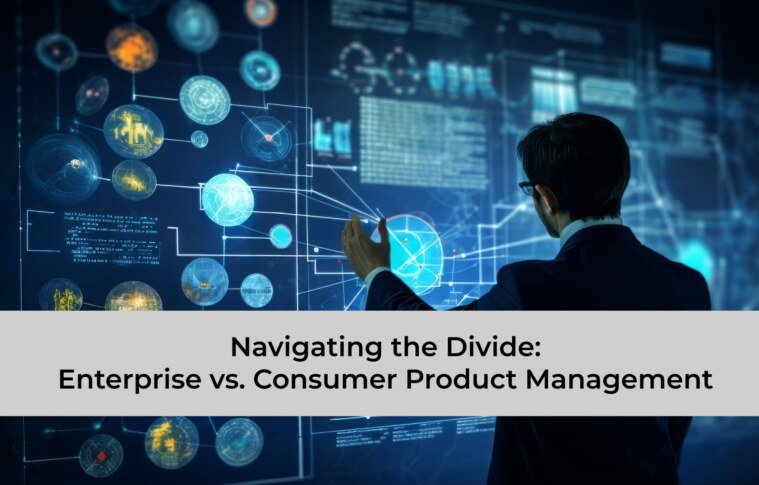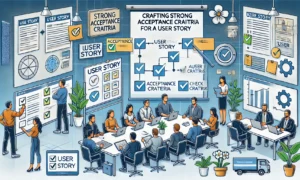Product management is a broad discipline, but two of the most distinct areas within it are enterprise product management and consumer product management. While both types of product managers share core responsibilities—such as identifying customer needs, prioritizing features, and ensuring successful product delivery—their day-to-day challenges, customer base, and strategic objectives differ vastly. Understanding these differences is crucial for anyone pursuing a career in product management or looking to better understand the unique requirements of each type.
1. Customer Profiles: The Core of the Difference
At the heart of the distinction between enterprise and consumer product management is the customer.
- Consumer product management is centered on individuals, focusing on products that cater to the general public. These products, from apps to gadgets, need to appeal to a broad user base, often with varying preferences and behaviors. Consumer PMs must prioritize user engagement, delight, and satisfaction to create products that resonate with a wide audience.
- Enterprise product management, on the other hand, focuses on businesses, organizations, or teams within organizations. Enterprise products tend to be complex, with deep functionality tailored to solve specific business needs. Here, the focus is on improving operational efficiency, enhancing collaboration, and addressing scalability or compliance challenges for entire organizations.
Key takeaway: In consumer PM, you’re solving problems for individuals; in enterprise PM, you’re solving problems for businesses or organizations with specific workflows and requirements.
2. Feature Prioritization: Speed vs. Stability
In consumer product management, the emphasis is often on rapid innovation and user-centric features. Speed is essential—companies must release frequent updates, experiment with new features, and respond quickly to customer feedback. The user experience (UX) is front and center, and product managers often have to balance between adding new features and maintaining a smooth, intuitive interface.
In contrast, enterprise product managers deal with more complex, long-term roadmaps. Features tend to be more strategic, with greater consideration for integration, security, and scalability. Enterprise customers often require products that are deeply customized or configurable, with an emphasis on reliability, data privacy, and compliance. This makes feature prioritization less flexible in terms of speed but more focused on stability, reliability, and long-term value.
Key takeaway: Consumer PM is driven by fast-paced iteration and user feedback, while enterprise PM focuses on robust, scalable solutions with longer development cycles.
3. Sales and Marketing Strategies: Mass Appeal vs. Niche Targeting
Consumer products often rely on mass-market strategies, leveraging advertising, brand recognition, and social media influence. The goal is to reach as many users as possible, often through viral marketing or influencer partnerships. The sales cycle is generally shorter, with purchases being made on a consumer’s terms, often driven by immediate needs or emotions.
For enterprise products, the sales cycle is lengthier and more consultative. Sales teams work closely with prospects to understand their business challenges and offer tailored solutions. Marketing strategies often focus on relationship building, targeted outreach (via email, webinars, case studies), and events like trade shows. Enterprise PMs must also ensure that the product fits into the larger IT ecosystem of the organization, requiring extensive training, documentation, and customer support.
Key takeaway: Enterprise products often require direct sales relationships and a long-tail strategy, while consumer products depend on scalable, mass-market approaches.
4. Revenue Model: Subscription vs. One-Time Purchase
Enterprise products often operate on a subscription-based model, where customers pay for the service over time, sometimes based on the number of users or the scale of the solution. The pricing is typically customized, reflecting the value the product brings to an organization.
Consumer products usually have more standardized pricing models, whether through one-time purchases (like apps or hardware) or subscriptions (like streaming services). However, the price points are typically lower than those in the enterprise space, and the value proposition is generally more immediate.
Key takeaway: Enterprise PM involves navigating complex pricing and long-term contracts, while consumer PM often revolves around high-volume, lower-cost models.
5. Feedback Loops: Data-Driven vs. Relationship-Driven
Consumer product managers rely heavily on data analytics and A/B testing to refine their products. Metrics such as user engagement, retention rates, and customer satisfaction surveys provide invaluable insight into product performance and areas for improvement. Consumer PMs are constantly looking for quick feedback loops to iterate and enhance the user experience.
In contrast, enterprise product managers engage with clients in a more relationship-driven manner. Customer feedback might come through formal business reviews, customer support tickets, or direct interactions with product teams. Feedback cycles are longer, but they tend to be more in-depth, as enterprise clients expect customized solutions and are more likely to provide detailed, strategic input.
Key takeaway: Consumer PM is driven by real-time user data and testing, while enterprise PM thrives on longer, relationship-based feedback loops.
6. Team Dynamics: Agile and Collaborative vs. Structured and Cross-Functional
In the consumer space, product teams are often small, agile, and cross-functional. Collaboration between developers, marketers, and designers is fluid, with a strong emphasis on innovation and speed. Consumer PMs need to be flexible and open to iterative development, quickly adjusting the product based on market needs and user feedback.
Enterprise product teams, however, are often more structured, working with large development teams and having specialized roles (e.g., compliance, security, integrations). Enterprise PMs need to coordinate with multiple internal departments and external vendors, and ensure that product features meet regulatory or industry standards. The pace may be slower, but it requires a high level of coordination and precision.
Key takeaway: Consumer PM teams are fast-paced and highly collaborative, while enterprise PM teams require more structure and coordination across various departments.
Conclusion: Which Path to Take?
While both enterprise and consumer product management share the common goal of delivering products that meet customer needs, the paths diverge significantly in terms of customer focus, product complexity, and go-to-market strategies. Whether you’re drawn to the fast-paced world of consumer products or the strategic, long-term thinking required for enterprise solutions, each realm offers unique challenges and opportunities. Understanding these differences can help you decide which path in product management aligns with your skills and career aspirations.



